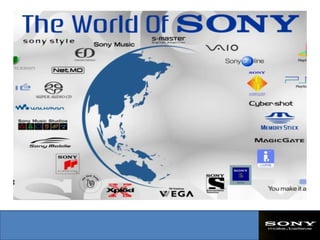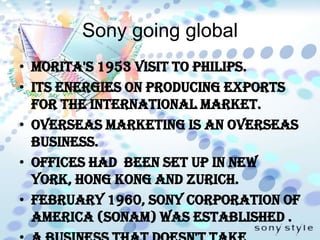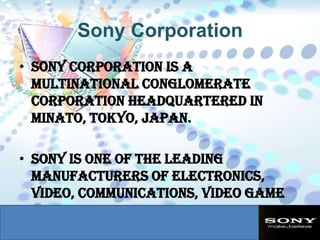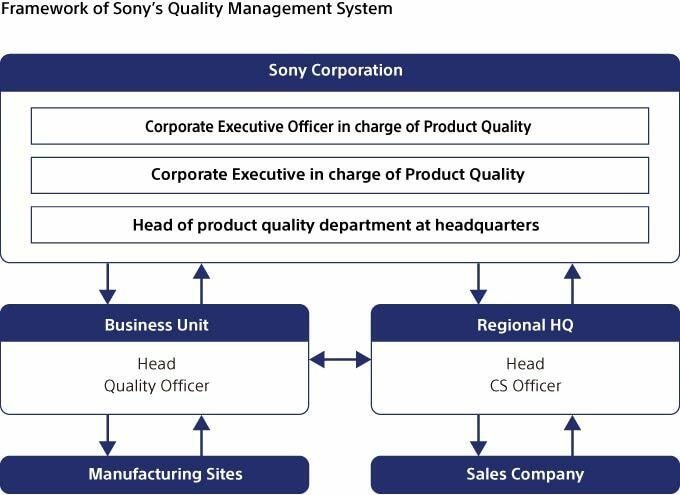Sony Corporation is a multinational conglomerate corporation headquartered in Tokyo, Japan. The company is engaged in a wide range of businesses, including consumer and professional electronics, gaming, entertainment, and financial services. In this case study analysis, we will examine Sony's history, business model, and key strategies, as well as its strengths, weaknesses, opportunities, and threats (SWOT analysis).
History:
Sony was founded in 1946 by Masaru Ibuka and Akio Morita, who initially started the company as a radio repair shop in Tokyo. In the 1950s, the company began manufacturing consumer electronics, including the first Japanese transistor radio and the first Japanese tape recorder. In the 1960s, Sony expanded into the global market, introducing innovative products such as the Trinitron television and the Walkman portable cassette player. In the following decades, Sony continued to expand and diversify its business, entering into new markets such as gaming, entertainment, and financial services.
Business model:
Sony operates in a number of different industries, including consumer electronics, gaming, entertainment, and financial services. The company's primary business model is to design, develop, and manufacture a wide range of products and services, and then sell them through various channels such as retail stores, online marketplaces, and distributors. Sony also generates revenue through licensing its intellectual property, such as its brand name, technology, and content.
Key strategies:
Sony has implemented a number of key strategies over the years to maintain its position as a leading global company. One of these strategies has been to focus on innovation and differentiation. Sony has consistently invested in research and development to bring new and innovative products to market, such as the Trinitron television and the Walkman portable cassette player. The company has also focused on developing unique and proprietary technology, such as the Blu-ray disc format and the PlayStation gaming console.
Another key strategy for Sony has been to expand and diversify its business. The company has entered into a number of new markets, such as gaming, entertainment, and financial services, to reduce its reliance on any one industry. This diversification has allowed Sony to weather economic downturns and shifts in consumer preferences more effectively.
SWOT analysis:
Strengths:
- Strong brand recognition and reputation
- Wide range of products and services
- Strong research and development capabilities
- Global presence and distribution network
Weaknesses:
- Dependence on a few key markets, such as electronics and gaming
- High price points for some products
- Intense competition in some markets
Opportunities:
- Growing demand for electronics and gaming products
- Expansion into emerging markets such as Asia and Latin America
- Increasing demand for digital content and services
Threats:
- Intense competition from other companies
- Rapid technological changes and obsolescence
- Changes in consumer preferences and economic conditions
Overall, Sony has been successful in building a strong and diversified business, with a global presence and a strong reputation for innovation. However, the company faces a number of challenges, including intense competition and the need to adapt to rapidly changing technological and market conditions. To continue its success in the future, Sony will need to continue to focus on innovation and differentiation, as well as expand and diversify its business to reduce its reliance on any one market or industry.









